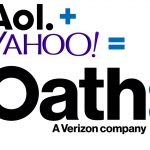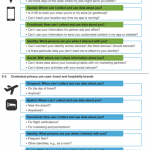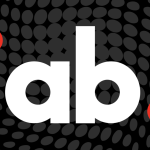IAB’s first publication on blockchain in advertising paints an optimistic picture
The white paper surveys current projects and the remaining challenges but envisions an ad future that solves the big problems.

In a sign that blockchain is picking up steam as a solution to some of digital advertising’s biggest problems, the Interactive Advertising Bureau (IAB) has released its first publication on the topic.
The white paper, “Blockchain for Video Advertising: A Market Snapshot of Publisher & Buyer Uses Cases,” surveys the technology, its potential added values — including transparency, reduced fraud and increased efficiency — and looks at several use cases.
Blockchains are distributed ledgers where transactions are open to all participants and, once recorded to the chain, are virtually impossible to change. There is no central authority, because blockchain tech is built on various kinds of consensus. The advantage of this approach is trust between parties who don’t know each other, and possibly less fraud because transactions are known.
The report looks at several pilot projects. There’s AdLedger, a non-profit consortium of ad and media companies that is working to mainstream the technology. Los Angeles-based MetaX has launched Ads.txt Plus, which employs blockchain so publishers can maintain and publish their own Ads.txt files of approved suppliers of their inventory. Eventually, authorized sellers might be able to verify authorized sellers even if the sellers’ names aren’t shown.
Kochava’s XCHNG intends to open-source its blockchain framework later this year, based on the idea that insert orders can become smart contracts. And NYIAX has built its blockchain-based environment on Nasdaq’s Financial Framework, but instead of stocks, it adds a new asset class: digital ads.
IAB’s paper is bullish on the technology, noting that this year will see more deployments in advertising, many in the proof-of-concept or pilot stage. By next year, IAB predicts, blockchain could take hold in the industry. But it also notes the challenges, such as improving blockchain’s sluggish performance speed, creating standards for identity management and a raft of legal issues.
The vision is certainly enticing for an ad industry struggling to maintain its balance against fraud, transparency and a new approach to personal data because of the upcoming General Data Protection Regulation (GDPR). Here’s one glimpse of that possible future, outlined in the white paper by MadHive CTO Tom Bollich:
“In the future, we would like to push the ad server out to the edges. Instead of housing user data in a centralized data store, [MadHive’s blockchain project] allows users to keep their data completely private by pushing ad decisioning to the edges — to the users’ devices. For example, can I put an ad server in your TV that is cryptographically sealed and holds your personal information inside of it? The ad server actually asks for advertising as opposed to getting pushed advertising. You never actually tell anyone who you are. That’s the future we see. Can your TV work with your phone, and then maybe even your fridge, to know who you are and give advertisers a deeper understanding of who the user is? We think so — and the blockchain can deliver it.”
Marketing Land – Internet Marketing News, Strategies & Tips
(23)















